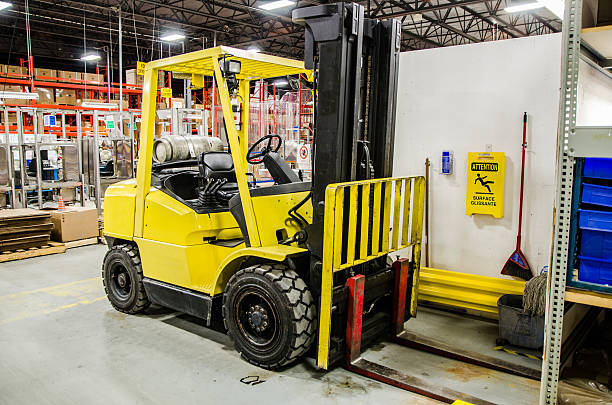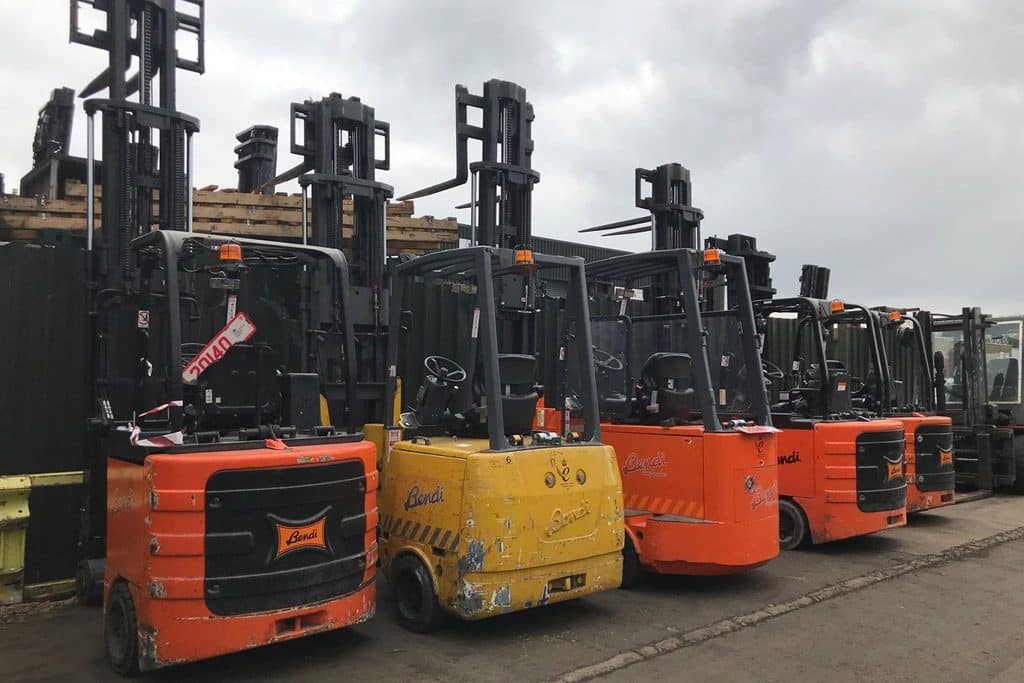In the bustling world of warehousing and logistics, efficiency is key. One of the essential tools for achieving high efficiency is the Very Narrow Aisle (VNA) forklift. These specialised forklifts are designed to operate in tight spaces, allowing for maximum utilisation of warehouse space. But which type of VNA forklift is right for your needs? Understanding the different types of VNA forklifts can help you make an informed decision and optimise your operations.
In this article, we will delve into the various types of VNA forklifts available on the market. You’ll learn about their unique features, benefits, and how they can cater to different operational requirements. Stay tuned and discover which VNA forklift could be the game-changer for your warehouse logistics.
What are the main types of VNA forklifts?
When exploring the realm of Very Narrow Aisle (VNA) forklifts, it’s essential to understand the different types available to ensure you select the right equipment for your specific needs.
- Man Down VNA Forklifts: These are designed for the operator to stay at ground level while the mast moves goods to and from higher locations. Ideal for fast, efficient handling in narrow aisles, they offer excellent visibility and control.
- Man Up VNA Forklifts: Unlike their Man Down counterparts, these allow the operator to be lifted alongside the load. This is advantageous for tasks involving manual picking or inventory checking at height, providing a higher degree of precision and flexibility.
- Turret Trucks: Also known as pivoting fork trucks, these VNA forklifts have forks that rotate 180 degrees, allowing them to pick up and drop off loads without needing to turn the entire truck. They are highly efficient in very narrow spaces.
- Order Pickers: These specialised VNA forklifts are designed specifically for picking individual items from racking. The operator is lifted with the load, which is useful for filling orders that consist of multiple individual items.
How do VNA forklifts differ from standard forklifts?
When it comes to comparing VNA (Very Narrow Aisle) forklifts with standard forklifts, the most noticeable difference is their design and operational capabilities. VNA forklifts are specifically engineered to operate in confined warehouse spaces with narrow aisles, typically less than 1.6 metres wide. In contrast, standard forklifts are more versatile but require wider aisles to navigate effectively.
One of the key differences is their wheel configuration. VNA forklifts generally feature a three-wheel design, which substantially enhances their turning radius and manoeuvrability. This is in stark contrast to standard forklifts, which usually have a four-wheel configuration making them less agile in tight spaces.
Another significant difference is the lifting mechanism. VNA forklifts often can lift loads to greater heights compared to standard forklifts. This is crucial for maximising vertical storage space, which is a common requirement in high-density storage facilities. In addition, VNA forklifts are equipped with specialised attachments and mast configurations that allow for precise handling of palletised loads, even at elevated heights.
However, it’s also important to note their limitations. VNA forklifts excel in indoor environments with controlled floor conditions, but they are not ideal for outdoor use or for tasks that involve loading and unloading from vehicles. Standard forklifts, on the other hand, are more suited for various environments, including outdoor terrains and loading docks due to their more robust build and versatile design.
What businesses benefit most from VNA forklifts?
When deciding if VNA forklifts are right for your business, it’s essential to understand the specific environments and operational needs they serve best.
- Warehouses: Warehouses with high-density storage systems significantly benefit from VNA forklifts, allowing optimal use of space.
- Retail Distribution Centres: Retailers with large inventories can efficiently manage storage and retrieval with VNA forklifts.
- Manufacturing Industries: Manufacturing plants that store raw materials and finished goods in tight spaces find VNA forklifts particularly useful.
- Logistics and Shipping Companies: These companies can streamline their processes by leveraging the manoeuvrability and efficiency of VNA forklifts.
- Cold Storage Facilities: Facilities dealing with perishable goods in confined spaces rely on VNA forklifts for precise and rapid handling.
- Automotive Parts Storage: VNA forklifts help manage the storage of numerous small, high-value parts efficiently.
- Healthcare and Pharmaceuticals: These sectors need compact, efficient storage solutions, making VNA forklifts indispensable for handling sensitive medical supplies.
- Textile and Apparel Warehouses: These facilities use VNA forklifts to maximise space usage for hanging and boxed goods.
Choosing the right VNA forklift for your business
When deciding on the ideal Very Narrow Aisle (VNA) forklift for your business, it’s crucial to consider a few key factors. Start by evaluating the width of the aisles in your warehouse. VNA forklifts are specifically designed for extremely narrow spaces, so ensuring your aisles have the minimum clearance required is essential.
Next, think about the type of materials you’ll be handling. VNA forklifts can manage a variety of palletised loads, but the nature of your inventory—whether it’s bulky, delicate, or unusually shaped—might influence your choice. Speed and precision are significant advantages of VNA trucks, but they must align with your specific operational needs.
Additionally, consider the height at which you need to store your goods. VNA trucks are exceptional at reaching greater heights, thereby maximising your vertical storage capacity. Ensure the forklift you choose can safely reach the highest points on your racks without compromising stability.
Don’t forget to evaluate the turning radius and manoeuvrability of the forklift. VNA forklifts are known for their tight turning capabilities and ease of control, which makes them perfect for tight spaces but could present challenges if your operations also require outside or extensive open space manoeuvring.
Finally, assess your budget and long-term maintenance plans. Investing in a VNA forklift is a significant decision, so factor in the sales, repair, restoration, and maintenance services available. Companies like Translift Bendi, who specialise in VNA forklifts, offer comprehensive support that can help maintain your fleet’s efficiency and lifespan.
Final Word
Understanding the different types of VNA forklifts is critical for optimising your storage operations and overall workflow. Whether you operate a bustling factory, a large storage centre, or manage extensive docks, choosing the right VNA forklift can make a substantial difference. By carefully considering your unique business needs and the specific benefits of each type, you can ensure efficiency and safety are always at the forefront of your operations.






